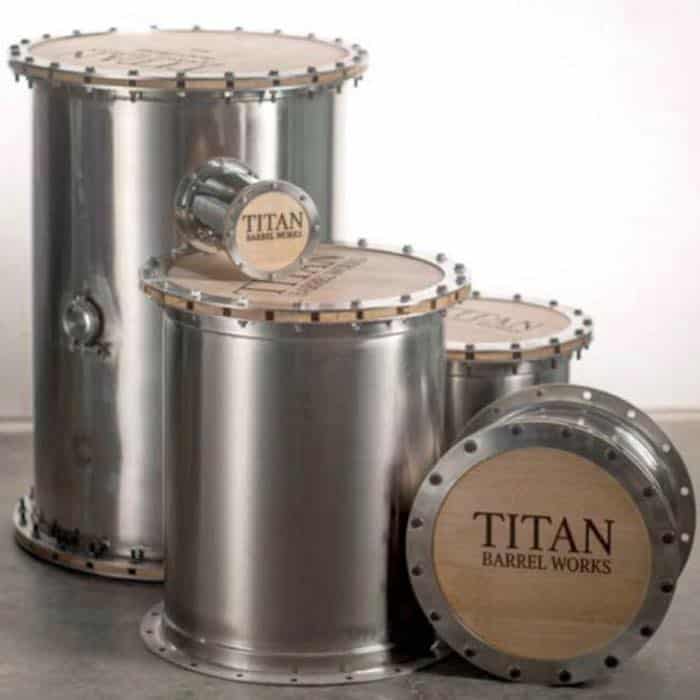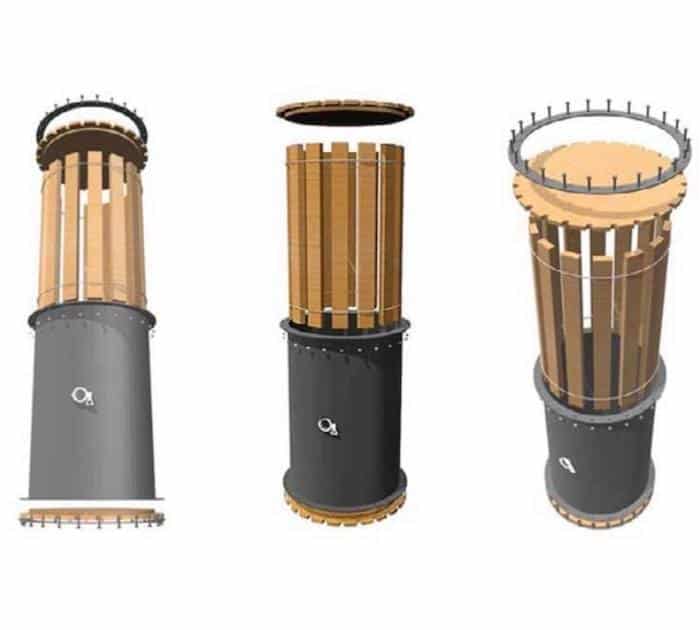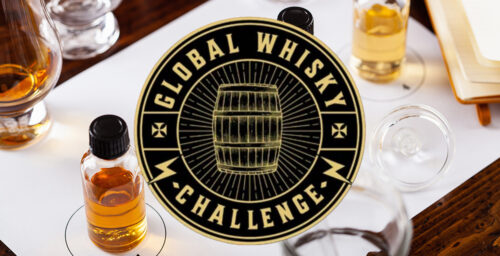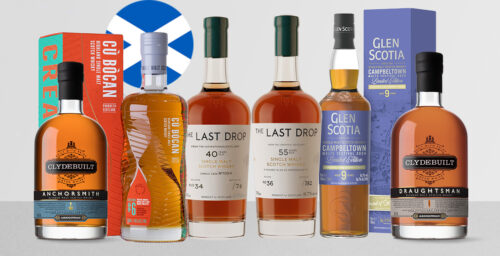I recently was pursuing some whiskey industry related literature looking for what might be new and interesting when I came across a photo of a rather unorthodox barrel design. Essentially a stainless steel shell with wood heads and internal staves that are reportedly easily interchangeable, I was curious to learn more about Titan Barrel Works, the company behind it, and how they felt their design was better versus the traditional barrel size and configuration that most whisk(e)y is aged in.
Titan Barrel Works, based in upstate New York, defines its barrels as The Barrel Reimagined. It is the brainchild of Michael Georgacopoulos and his partner Christopher Kay, who sought to make wine and spirits barrels in a new and unique way that allows for easier control on the distiller’s part while also saving on costs inherent with dealing with wooden barrels as they get older.
The company, which began in just 2017, purchased a 16,700 square foot facility to manufacture their barrels in. They have a goal of producing what’s said to be 40,000 to 50,000 barrels a year as interest in their invention hopefully grows. To learn more about the idea behind Titan Barrel Works we recently spoke with Georgacopoulos. Note this interview is edited for clarity and brevity.

The Whiskey Wash (TWW): Tell us a little but about the history of Titan Barrel Works. How did you guys come to be where you are today?
Michael Georgacopoulos: I started out as a cooper for traditional wooden barrels, and making the wooden barrels you can see that there is just such an amount of waste. Waste in the terms of the wood that goes into a barrel and there’s just so much labor that goes into making one barrel. My business partner’s actually a mechanical contractor in New York City, and I pitched the idea to him. From there he welded up one actually in a boiler room. That was our first product that we ever made.
From there we made a couple more prototypes and then we sent them out for testing to do a proof of concept before we went any further. We actually started with the distilled spirits industry because of how important micro-oxing is to getting all the chemical compositions correct in whiskey. From that proof of concept, several distilleries validated, “Hey this does age the product, age the product great.” We chose a wooden barrel. We started seeking manufacturers to actually make the stainless steel shells for us, and I guess we’re here today now.
TWW: What was the idea behind creating this?
Georgacopoulos: The premise behind this was to give distillers options that were never previously available in a reusable system. Traditionally they were stuck to American oak barrel or French oak barrel, Eastern European oak barrel, and there wasn’t much flexibility. It was the cooper just selling you char one, char two, char three. That’s what you get. What we offer our customers as an example, we offer them a Japanese Mizunara oak barrel at an affordable price. Or, we say listen, you can take char one staves, char two staves, and char three staves into the same barrel to bring out the characteristics of each of the different char levels.
TWW: With this barrel you’ve created, talk a little bit about how it’s designed and how one puts a barrel like this together.

Georgacopoulos: We didn’t vary too much from your traditional wooden barrel. It’s the same shape, fits on standard barrel racks, so a customer wouldn’t have to change their entire operation to bring in a Titan Barrel. What we do is, your wooden heads fit on the end, 24 bolts on each side. We actually use a rivet nut on the stainless steel shell, so it’s exactly like changing a tire. Just un-bolt it. There’s an FDA-approved gasket there that acts as a redundancy that the head actually seals to the shell once it’s swollen like a cork effect. Then that provides your first line of defense against leaks, and then the gasket’s there just in case God forbid something goes wrong and the product just fell over the floor.
Internally we have two versions. We have a completely lined version which is 100% oak inside. Actually oak seals to the head. Then we have another version where there is just the same surface area using all four sides of contact as a 53-gallon barrel and that’s held in place with a stainless steel wire with little notches in it that staves just drop into place right there.
So we say once a customer is accustomed to working with a Titan barrel, they can do it like we do at the factory and it takes about seven to eight minutes to strip a barrel down, put new heads and new staves on it and then put it back into service.
TWW: What are some advantages of your barrel hybrid design versus traditional barrels?
Georgacopoulos: You’re going to have the flexibility of customization where the barrel meets what the distiller’s doing, not that the distiller has to meet what the barrel is doing. You’re able to finish the product much better. What we’ve done through some of our testing is finishing different whiskies, different bourbons, and the outcome is just tremendously better then that what you get out of a wood barrel because you have more flexibility to add more wood, less wood so that it doesn’t tire your hand.
TWW: With regards to whiskey barrels, how are those options configurable?
Georgacopoulos: However the customer wants. Your standard barrel, charred American oak heads, charred American oak staves, same surface area as the standard 53-gallon barrel. All our staves are toasted before charring which is very important as you know to caramelize the sugars of the wood and change the chemical composition of the wood itself.
It’s not just charred on propane. We do a toasting process to where it’s a light, medium, or medium plus depending on the customer’s requirement. Then from that standard barrel, the customer can choose whatever they want. They can say I want a stronger oak impact, so we’ll add staves. Or they want less oak impact because they want to go longer aging, we can remove staves.
TWW: At the end of the day in terms of aging quality of a product, what advantages do you think your barrels have over the traditional cooperage models?
Georgacopoulos: The distiller will have more control over the barrel. The traditional barrel you really can’t see what’s inside. You don’t know. You could get a different char level from cooperage to cooperage or even from barrel to barrel.
TWW: Does your barrel decrease aging time?
Georgacopoulos: I don’t want to say that. That’s not the correct statement. You’re able to produce a better product sooner. If you age it out two years in a Titan barrel, that product that comes out of the Titan barrel is just going to be that much better than if it was aged in a wood barrel for two years. We’re not accelerating the aging. Primarily that’s just bullshit. If you’re going to do a product and you do it right and you say we age out in two years or four year or six years, when that time frame’s up it’s going to be that much better of a product. It tastes like an older product.








